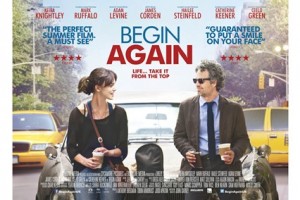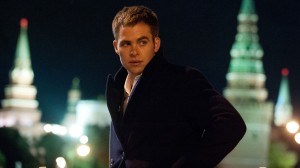 I spoke to one of my favorite directors, Joe Wright (“Pride and Prejudice,” “Atonement,” “Hanna”) about his sumptuous new film, “Anna Karenina,” starring Keira Knightley.
I spoke to one of my favorite directors, Joe Wright (“Pride and Prejudice,” “Atonement,” “Hanna”) about his sumptuous new film, “Anna Karenina,” starring Keira Knightley.
One of my favorite scenes in the film reminded me very much of one of my favorite scenes in “Pride and Prejudice,” using intricate choreography of dance and camera movement to tell the story. So tell me a little bit about how you put that together.
I really loved doing the dance in “Pride and Prejudice” and I haven’t had an opportunity to do it again and perhaps, further what I did in “Pride”—so I really took this film on as an opportunity to kind of create a ballet with words. And the dance in the ball especially, I wanted to push further than I had. With “Pride,” some things happened by accident, the moment where everyone disappears in the dance and Elizabeth and Darcy dancing by themselves was an accident. So there were lots of things that happened there that I kind of had touched upon that I wanted to return to and explore more fully. I like dance a lot and I go and see a lot of dance in London, and one of the choreographers I most admire is a guy called Sidi Larbi Cherkaoui, who’s a Belgian/Moroccan choreographer. I’m a huge fan of his work, and so I asked him to come and collaborate on this movie, and really handed certain sections of the film over to him.
We had a three week rehearsal period and probably a good week of that (if not two) were spent doing physical workshops and thinking about the performance and the characters and the physical context. So all of that I found fascinating and then Labi and I worked on—well, he worked on the choreography for a long period and I’d go and visit him in Antwerp and we’d discuss. One had to be kind of telling that story. One couldn’t just kind of go off into pure formalism, it had to be at the service of the story. So I was always keeping an eye that were were telling a story, and he was coming up with his gorgeous ideas.
A lot of the music was composed prior to shooting, music that is involved in the dances but also what would be called the score, and so it allows the performers and the camera operators a sense of the rhythm, and I particularly asked Dario Marianelli, also, to reference Stravinsky and the composers who were more influenced by Eastern atonal harmonies and stuff, partly because I have a love of that music, but also to give a sense of the breadth of the nation, of something not entirely what we think of as being European.
The costumes are not just beautiful and very striking and distinctive. They help to define the characters.
You know, the first thing that Jacqueline Durran and I decided was that we weren’t particularly interested in creating historically accurate costumes. I like the silhouette of the 1870’s dresses, the big bums at the back and all of that stuff, but I didn’t like the detailing of them. They’re very fussy and prissy, lots and lots of lace and lace and lace and ribbons and all of that stuff—which I find I don’t like very much. So we took the silhouette but we also looked at, in particular, some Christian Dior dresses from the 1950s and noticed that the silhouette was very similar. So we really kind of created a style of dress that was somehow working with both of those influences. And obviously with Anna, you wanted a sense of her wealth and her sophistication. Keira is a little bit younger than Anna is described as being in the book, here, I think, 26 or 27, Anna is 28 and Anna is a mother so we wanted to kind of give her a status in the costumes as well, a little bit of age. And also this sense of—I like the kind of drapery of it, the dresses are quite draped, they feel like they could kind of almost fall off on any moment. And you also work with what an actor has got, and Keira’s got this exquisite back, and so the green dress in “Atonement” and the dresses here show off her back.
We wanted to avoid the scarlet woman so we didn’t use too much red in her costumes. She becomes more flamboyant as the affair goes on, and so do her clothes. It’s almost like she gets involved—I kind of think of Princess Betsy, Vronsky’s cousin, as being like the Kate Moss of the period. So although she’s been moving in this very kind of high society prior to her affair, it’s the society that’s almost like a political society, it’s quite a conservative society that she’s been moving in. So it’s almost like she’s been hanging out in Washington and suddenly discovers New York club scene or something. And so she becomes more kind of flamboyant and risky in her costume. So, you know…I also really love in the film what Jacqueline did with the costumes of the lower-class characters. A lot of those are influenced by quite Eastern design, sort of even as far as India, and that, to me, we did that to suggest the breadth of the country as well, of Russia at the time, so you had the Parisian influence with the high-society dresses but also the Eastern influence with some of the peasants.
I liked your more nuanced portrayal of Vronsky, who is often seen as just callous and superficial.
Vronsky’s one of the only characters in the book whose age isn’t specified, but he’s described as being a kind of boy soldier. He’s described as a kind of golden youth, and the way in which he falls in love is a very young kind of way. It’s very kind of, sort of puppy-doggish almost and reckless and open. He declares his feelings straight off. He’s never been hurt by love. And so it seemed appropriate to me to cast him younger than Anna, so that he’s, you know, 20, 21, and everything is fine until it’s not, and when Anna becomes frayed, he gets out his depth, you know? He doesn’t know how to handle this situation, it’s beyond his experience and his abilities and so he can’t really help much. Needless to say, though, he does love her, and he is honorable and he doesn’t leave her, you know? He sticks with her and personally, my opinion, he’s not having an affair with the princess. I think he probably thinks about it, but doesn’t, which is probably more honorable than not even thinking about it. And so I think he’s a good man, I just think he’s out of his depth.
The theatricality of the film is so well handled, illuminating, not distracting.
Thank you. The theater concept gave me a limitation and I find limitations quite liberating, creatively. At the end of the day, this, as much if not more than any other film, relied on the close-ups of the actor’s faces, and when you’re in close-up, it doesn’t matter where you are, you know? The background is soft focus, and you’re engaged directly with the emotions of the characters…and I think probably 50 percent of the film is told in close-ups. It feels to me like we’re in a period of new romanticism, where emotion is prized above all else. Sometimes I like to have my critical faculties engaged when I’m watching a film, and people kind of, often studios, really, think that if you take the audience out of the emotion, then that’s some great taboo that you’re not allowed to do, that they have to have their suspension of disbelief there at all times. And I’m not sure that’s true, I think that’s underestimating an audience. I think an audience enjoys something perhaps a little bit more playful.





